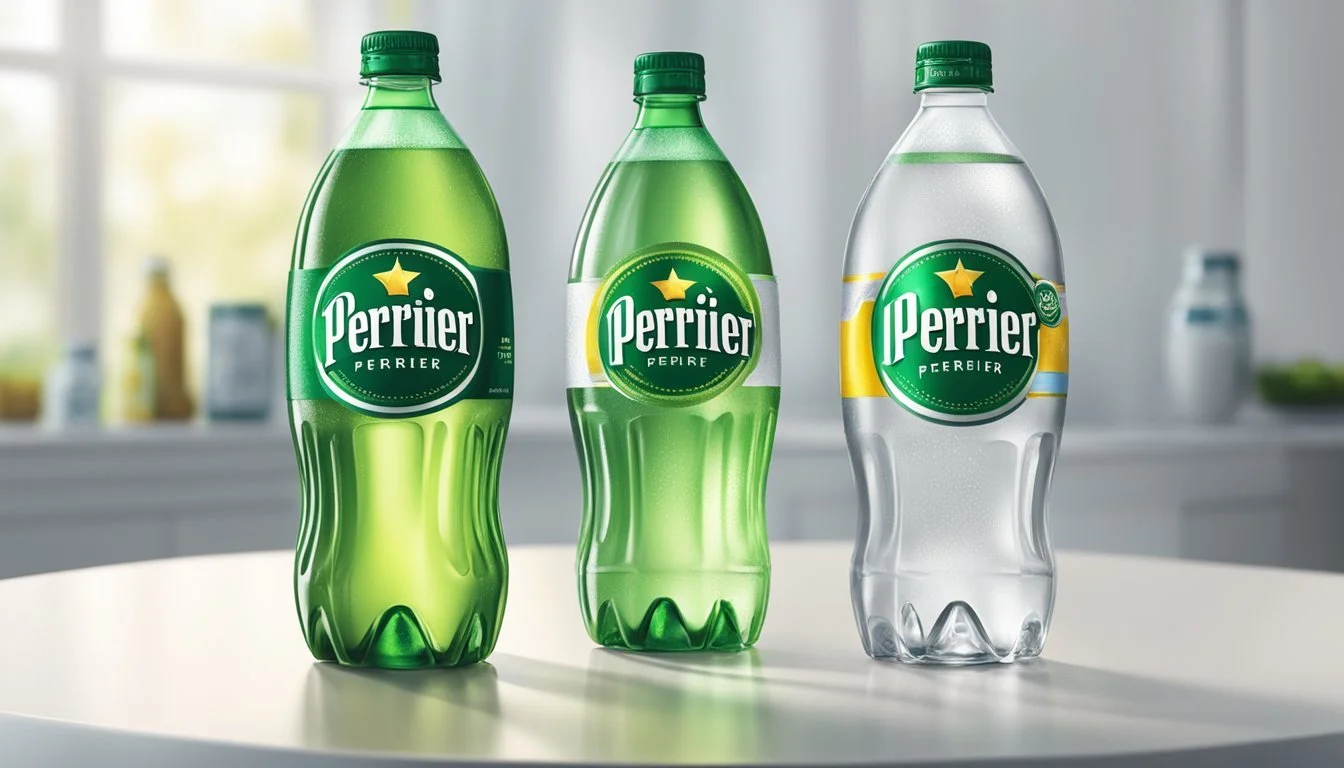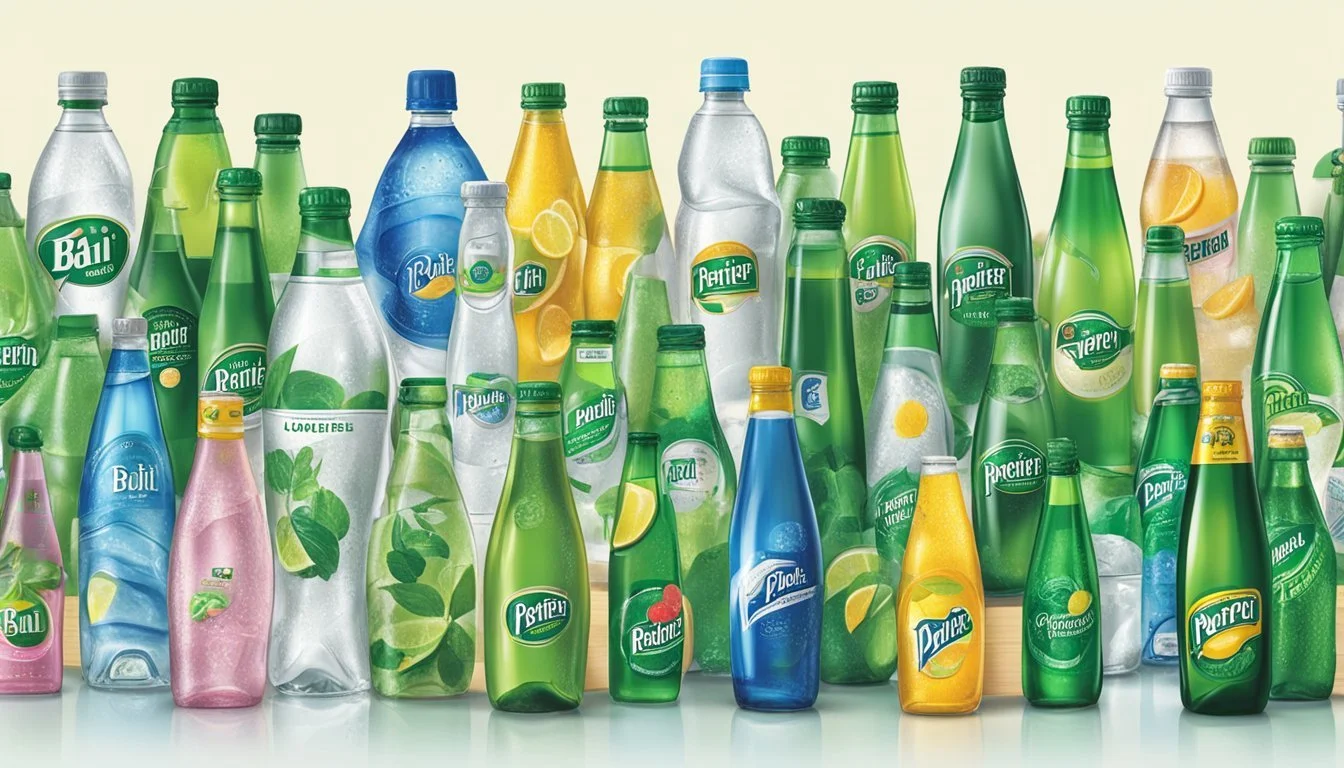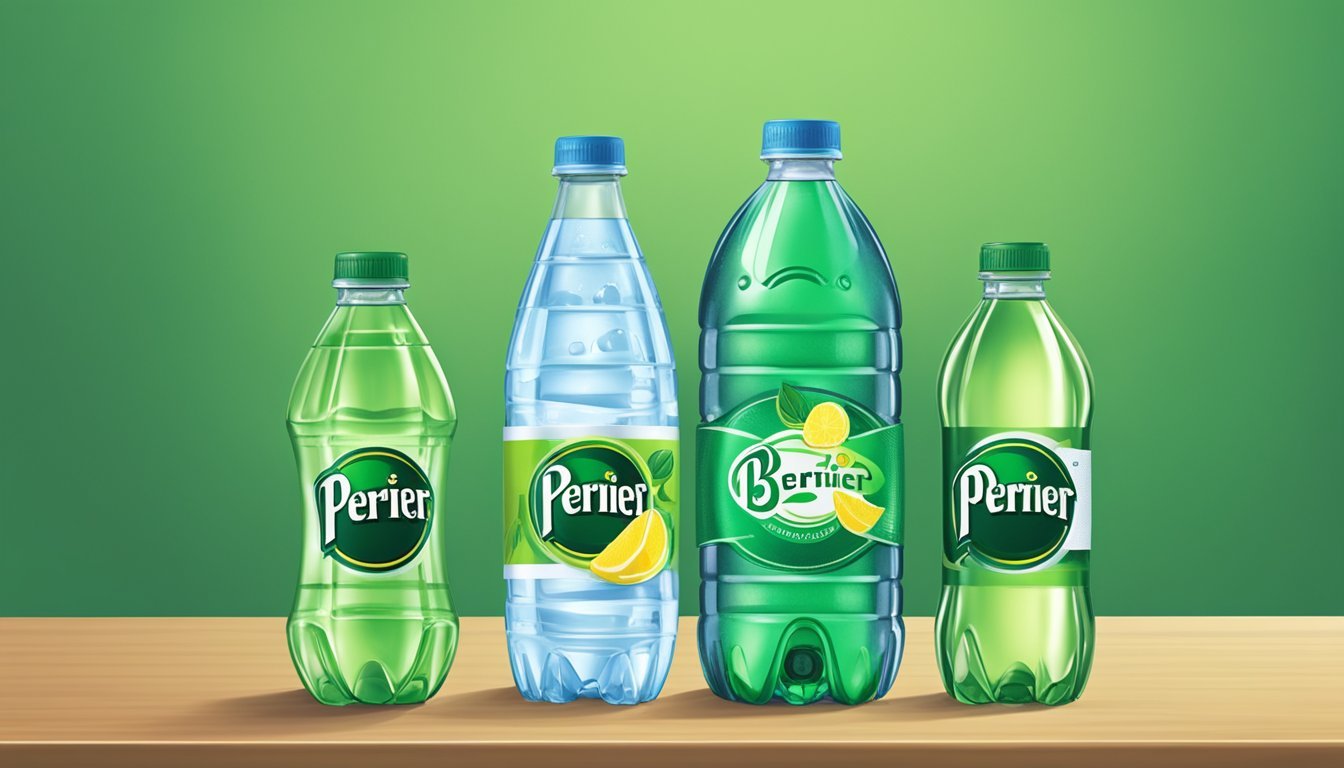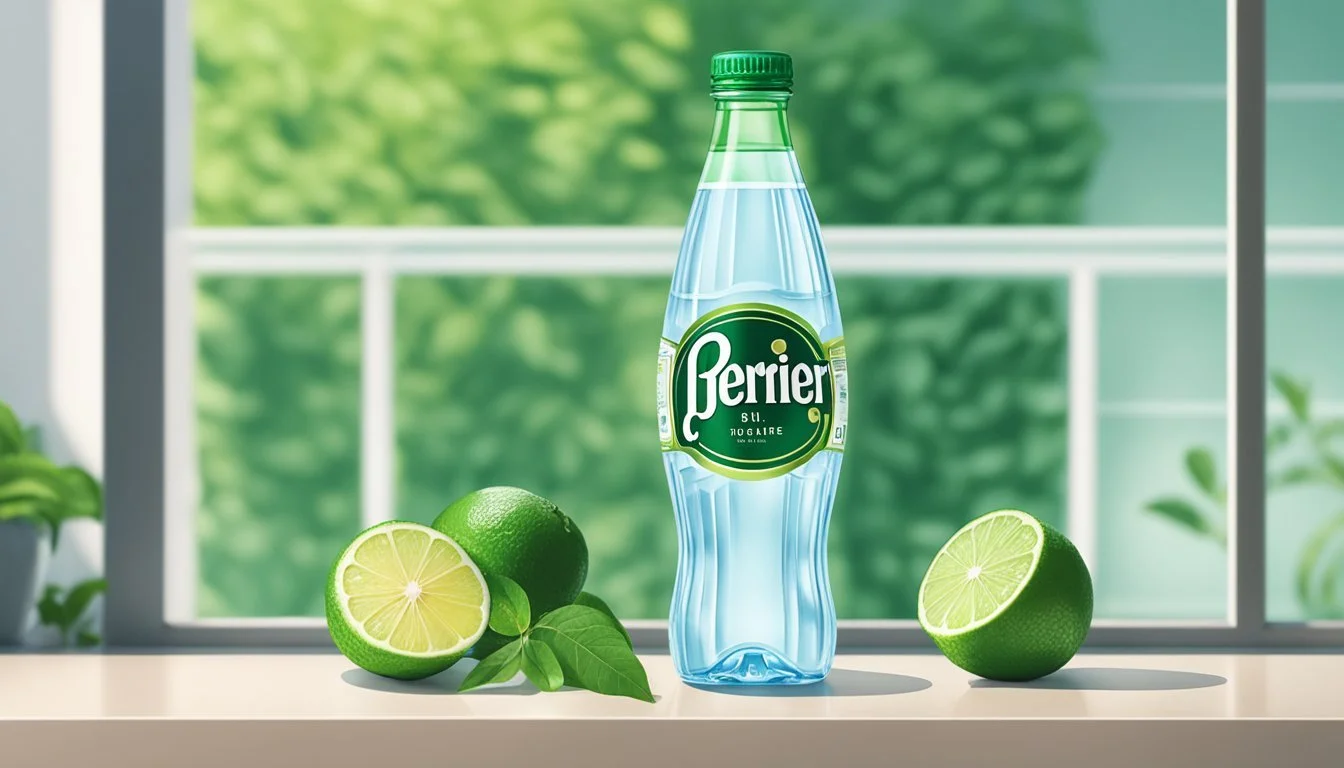Bai vs. Perrier
Comparing Quality and Taste in Bottled Water Brands
Choosing the ideal bottled water can sometimes come down to personal preferences regarding taste, mineral content, and additional health benefits. Bai and Perrier are two brands that command attention in the bottled water market, and they appeal to different consumer needs. Bai's beverages, which include a line of enhanced waters, offer antioxidant properties primarily from the coffee fruit extract. They also boast low-calorie content, with only 1 gram of sugar per bottle, catering to health-conscious individuals.
Perrier, on the other hand, is renowned for its naturally carbonated mineral water sourced from the South of France. The bubbles in Perrier are a result of the natural geological process at the source, making it a favorite for those who enjoy sparkling water with a distinctively refreshing taste. The mineral content, from calcium to magnesium, is also a key selling point for Perrier, providing an alternative to still water for consumers seeking added nutritional benefits.
When discussing hydration, both Bai and Perrier offer unique qualities that go beyond simple refreshment. The value of Bai resides in its antioxidant components and its positioning as a functional beverage, while Perrier's appeal lies in its effervescence and mineral content. As consumers continue to seek out bottled water that fits their lifestyle and health goals, the choice between Bai and Perrier is indicative of a larger trend towards specialized offerings in the water market.
History and Overview of Bottled Water
The bottled water industry has seen significant growth, evolving from its early European origins to global prominence. Brands like Bai and Perrier represent modern iterations of this long-standing tradition.
Evolution of Bottled Water
The commercial distribution of bottled water can be traced back to the 17th century, where glass bottles were first used to transport water from remote locations, valued for its purported health benefits. Nestlé and PepsiCo are notable companies that later entered the market, with Nestlé acquiring Perrier and PepsiCo introducing Aquafina. Both companies have leveraged aggressive marketing strategies to position their products as premium hydration choices.
Nestlé: Acquired Perrier in the 1990s
PepsiCo: Launched Aquafina in 1994
Bai and Perrier in the Market
Bai, known for its antioxidant-infused beverages, presents a modern take on bottled water by combining flavor with purported health benefits. Perrier, on the other hand, is a classic brand that became synonymous with sparkling mineral water since being acquired by Nestlé. These brands exemplify the diversification within bottled water offerings, catering to various consumer preferences.
Bai: Offers antioxidant-infused water
Perrier: Represents traditional sparkling mineral water
Source and Production Process
The purity, taste, and quality of bottled water are significantly influenced by its source and the production process it undergoes. Here, the focus is on the distinct procedures Bai and Perrier employ, from sourcing to the point of bottling.
Bai's Sources and Filtration
Bai sources its water mainly from natural springs and utilizes a meticulous filtration process to ensure purity and taste. The water undergoes reverse osmosis, a powerful filtration method that removes impurities by passing water through a semipermeable membrane. Further filtration processes are implemented to maintain the natural balance and high-quality standards expected in each bottle.
Perrier's Capture and Carbonation
Perrier's water is captured directly from a uniquely formed natural spring in Vergèze, located in the Gard département of France. What sets Perrier apart is the natural carbonation process; the water emerges from the spring already naturally carbonated due to volcanic gases that arise from the same underground source. No additional carbonation is introduced in the bottling process, preserving the water’s distinctively fresh and crisp taste.
Nutritional Content Comparison
The nutritional content of Bai and Perrier varies, with Perrier being a mineral water rich in natural electrolytes, while Bai water offers added health benefits through infused antioxidants.
Mineral Presence in Bai and Perrier
Bai Water
Electrolytes: Contains minimal electrolytes naturally.
Minerals: Lacks significant mineral content; enhanced with antioxidants like vitamin C.
Perrier
Electrolytes: Contains a variety of minerals and is especially low in sodium (<10 mg/l).
Magnesium: Provides a source of magnesium, essential for several bodily functions.
Calcium: Includes calcium, aiding in bone strength.
Potassium: Potassium is present, beneficial for heart health.
Bicarbonate: Rich in bicarbonate, which may help maintain pH balance.
Health Benefits of Hydration
Bai Water
Antioxidants: Infused with antioxidants such as those from coffee fruit extract and tea extract, which may protect cells from damage.
Vitamin C: The inclusion of vitamin C supports the immune system.
Perrier
Hydration: Efficiently hydrates with the additional benefit of naturally occurring electrolytes.
Health: Supports overall health due to minimal calorie content and absence of added sugars or artificial sweeteners.
Taste Profile and Palatability
When discerning the differences between Bai and Perrier, the taste profile and palatability of the waters are central to consumer choice. Factors influencing taste and individual preference for flavor play significant roles.
Water Taste Determinants
Taste is affected by a variety of determinants, including mineral content and the presence of carbonation. Bai brands often infuse their water with natural flavors and antioxidants, which can alter the taste to provide a fruit-inflected profile. Perrier, on the other hand, is a type of sparkling water that derives its taste from the unique combination of minerals and the carbonation level, which gives it a crisp and slightly acidic palate sensation.
Consumer Preferences on Flavor
Consumer preferences vary widely, with some favoring the natural and subtle taste of spring waters and others leaning towards the enhanced flavors or the zest of sparkling waters. Bai's fruit-flavored waters might appeal to those who prefer a sweeter, flavored beverage, whereas Perrier may be more suited to consumers who enjoy the refreshing and effervescent experience that sparkling water provides. Preferences can also be influenced by the perceived health benefits or the occasion for drinking water—whether it is for hydration, pairing with a meal, or as a cocktail mixer.
Environmental Impact and Sustainability
The environmental sustainability of bottled water is a significant concern, with factors like plastic bottle pollution and water source conservation at the forefront of the discussion. Comparing Bai and Perrier in these areas involves examining their packaging practices and the management of their water sources.
Plastic Bottle Pollution
Bai beverages usually come in PET plastic bottles, which are recyclable, but still contribute to pollution if not properly disposed of. Perrier, on the other hand, is known for its glass bottles, which have a better environmental profile since glass is endlessly recyclable. However, the heavier weight of glass increases transportation energy consumption. In terms of sustainability, both Bai and Perrier offer aluminum cans, which are also recyclable and may have a lighter environmental footprint.
Impact on California: Given that California has faced severe drought, the use of water for bottling and the additional strain on recycling systems is highly relevant. Local water resources are under pressure, and the energy used in recycling or discarded plastic can exacerbate environmental strain.
Water Source Conservation
Both brands claim to practice sustainability in water sourcing, but this must be evaluated critically. Bai sources its filtered water from U.S. municipal sources, potentially impacting local water tables less than natural spring water extraction. Perrier draws water from a protected spring in Vergèze, France, where it must manage the extraction to avoid depleting the aquifer.
Sustainability Practices: To mitigate environmental impact, companies typically implement measures such as reducing water use in production and investing in water conservation initiatives. Bai and Perrier must regularly assess their practices' sustainability to minimize their products' environmental footprints. Notably, such measures are critical in regions facing water scarcity, like California, where conservation is paramount.
Brand Reputation and Consumer Trust
When choosing bottled water, consumers often consider the reputation and the trust they have in a brand. Bai and Perrier have distinct market standings and consumer perceptions, which significantly influence their appeal.
Bai's Market Positioning
Bai, known for its antioxidant infusion drinks, has positioned itself in the water market as a brand that combines hydration with health benefits. Their reputation hinges on offering a product that goes beyond simple refreshment, as they infuse their waters with antioxidants and flavors. This has attracted health-conscious consumers and bolstered their reputation in a market where wellness is increasingly valued.
Consumer Reports: Often discusses the various health claims of bottled water brands and Bai's focus on health benefits helps it stand out.
Brand Reputation: Bai's association with health and wellness contributes positively to its reputation.
Perrier as a Premium Brand
Perrier stands as a premium brand in the bottled water market, with its naturally carbonated mineral water sourced from France. It has earned consumer trust through its consistent quality and distinctive, upmarket packaging. Perrier's reputation as a premium water brand appeals to consumers seeking a superior drinking experience associated with sophistication and elegance.
Consumer Reports: Highlight the premium aspect of water brands, and Perrier commonly features due to its established market presence.
Brand Reputation: Is supported by Perrier's longstanding history and the perceived luxury of the brand.
Both brands leverage their unique market positions to foster consumer trust, yet they cater to different niches within the broad bottled water market. Bai appeals to health-focused individuals, while Perrier serves those who prefer a more luxurious hydration experience.
Product Range and Varieties
The product ranges of Bai and Perrier showcase diverse options tailored to meet different consumer preferences. Both brands emphasize distinctive characteristics in their offerings with Bai focusing on flavored still water infused with antioxidants, while Perrier presents a variety of sparkling waters with a touch of French elegance.
Flavored Variants of Bai
Bai waters are available in a variety of fruit-flavored variants. They highlight a unique selling point of containing antioxidants from the coffee fruit extract and tea extract. Notably, each bottle of Bai water typically:
Contains 1 gram of sugar
Delivers only 10 calories
Does not contain any artificial sweeteners
The Bai product line also remains gluten-free, catering to individuals with gluten sensitivities.
Perrier's Sparkling Lineup
Perrier is well-known for its sparkling water, delivering effervescence with a selection of flavors. Perrier's sparkling lineup is characterized by its:
Carbonation, creating a refreshing drinking experience
Natural flavor options that cater to those seeking variety without added sugars
Classical mineral water roots with a modern twist of flavors such as lime, pink grapefruit, and green apple
Perrier waters have carved a niche in the market for consumers appreciating bubbly, mineral-rich water sourced from France.
Packaging and Branding Strategies
When considering Bai and Perrier, their approach to packaging and branding strategies are distinct, with each employing unique methods to stand out in the crowded bottled water market.
Bai's Marketing and Packaging
Bai employs a bold and colorful branding strategy that reflects its focus on offering antioxidant-infused beverages with exotic fruit flavors. Their bottles are typically clear plastic, reinforcing the purity of the water, while the labels feature vibrant colors that represent the different flavors they offer. Bai's packaging is designed to grab attention on shelves, using distinctive visuals and branding that highlights the product's health benefits.
Perrier's Iconic Green Bottle
On the other hand, Perrier is synonymous with its signature green glass bottle that has become an emblem of the brand's premium positioning. The choice of glass over plastic underscores Perrier's commitment to sustainability, as demonstrated by its initiatives to explore innovative packaging solutions. The brand has also expanded its flavor offerings, showcasing these variations with subtle changes in its labeling while maintaining the iconic and elegant design that has long been associated with the Perrier name.
Price Analysis and Consumer Value
When comparing Bai and Perrier bottled waters, consumers often consider both price and value. The affordability of Bai appeals to cost-conscious buyers, whereas Perrier's luxury brand status offers a premium experience at a higher cost. This section explores the specifics of both options.
Affordability of Bai
Bai beverages are known for combining antioxidant infusion with flavorful experiences. Price-wise, a bottle of Bai water typically ranges between $1.99 to $2.49 for an 18 fl oz bottle. This pricing allows consumers to enjoy flavored water infused with antioxidants without a significant investment. In terms of consumer value, it delivers both hydration and a variety of fruit-inspired tastes, which appeals to those seeking both flavor and functionality for a moderate price.
Cost of Luxury with Perrier
Perrier, on the other hand, positions itself in the luxury segment of carbonated mineral waters. A standard 750 ml bottle usually retails for about $2.50 to $3.50. Although priced higher per ounce than Bai, Perrier is valued for its brand prestige and natural carbonation from its source in Vergèze, France. The consumer who prefers Perrier is often paying for the experience of a classic mineral water with a long-established reputation for quality.
Health and Dietary Considerations
When choosing between Bai and Perrier bottled waters, one must consider their health and dietary impact. This section explores the differences between the two in terms of calories and their suitability for various diets.
Caloric Content and Diet Friendliness
Bai Water boasts a low caloric profile, with each bottle containing just 10 calories. It does not contain any artificial sweeteners or added sugar and offers minimal sugar content of only 1 gram per serving. This makes Bai Water a fitting companion for individuals monitoring their caloric intake or following a low-calorie diet.
Perrier, on the other hand, is a calorie-free beverage. It is naturally flavored sparkling mineral water free from any added sugars or calories, well-suited for those on strict calorie-controlled diets.
Suitability for Special Diets
Both Bai and Perrier exhibit characteristics that complement special dietary needs:
Gluten-Free: Individuals with gluten intolerance or celiac disease can safely consume both Bai and Perrier as they are gluten-free.
Vegan: These beverages meet vegan standards; neither contains animal-derived ingredients.
When considering mineral content, Perrier may have a slight advantage, especially for those on a low-sodium diet. The sodium content in Perrier is relatively low, with less than 10mg per liter, which is beneficial for those managing their sodium intake. Although Bai contains a similar level of sodium (10mg per serving), it distinguishes itself by offering 20% of the Recommended Daily Value of Vitamin C, making it a suitable option for those looking to add an antioxidant boost to their diet.
Both beverages sit well within a variety of diet frameworks, adding versatility to their consumption for health-conscious individuals.
Consumer Insights
This section offers an overview of current consumer behaviors and sentiments toward bottled water, focusing on Bai and Perrier.
Trends in Bottled Water Consumption
In recent years, consumers have shown a heightened interest in the health and environmental implications of their choices, including bottled water. They typically favor products that offer added health benefits, such as electrolytes or vitamins, or that promise a more sustainable approach to packaging and sourcing. Among various options, sparkling waters like Perrier have gained popularity for their palate experience, while functional drinks like Bai, which offer antioxidant infusion, are also emerging as a preference for their perceived health benefits.
Notable Consumer Trends:
Health Consciousness: Preference for beverages with added health benefits.
Sustainability: Increased demand for eco-friendly packaging and ethical sourcing.
Experience Seeking: Desire for unique flavors and textures in sparkling waters.
Customer Reviews and Feedback
Customer feedback on Bai and Perrier reflects distinct preferences. Bai often receives praise for incorporating antioxidant-rich ingredients and offering a variety of fruit-forward flavors, leaning on the health-conscious trend. On the other hand, Perrier is lauded for its crisp carbonation and pure taste, appealing to those who seek a classic sparkling water experience. Although customer reviews are generally subjective, they provide valuable insights into the priorities and satisfaction levels of bottled water consumers.
Consumer Feedback Highlights:
Bai:
Positives: Antioxidant infusion, variety of flavors.
Critiques: Some consumers note an aftertaste from sweeteners used.
Perrier:
Positives: Natural carbonation, refreshing taste.
Critiques: Limited flavor options compared to some competitors.
Regulatory and Safety Standards
When comparing Bai and Perrier, understanding the regulatory compliance and safety standards each brand adheres to is crucial. These standards ensure the bottled water consumers receive is safe and of high quality.
Quality Control Measures
Bai utilizes a multi-step purification process that includes reverse osmosis and ultraviolet exposure. This methodology is designed to remove impurities and ensure a consistent taste profile. The company takes measures to adhere to Environmental Protection Agency (EPA) standards, which are stringent guidelines for tap water but also influence bottled water safety.
Perrier, on the other hand, sources its water from a spring in France. The brand falls under regulatory scrutiny due to its classification as bottled natural mineral water. Recent allegations suggest Perrier has had issues meeting certain French and U.S. standards due to contamination, necessitating filtration for purification.
Certifications and Regulations
Brand Certifications Governing Regulations Bai NSF, FDA EPA, FDA, state regulations Perrier Not specified FDA, French and U.S. standards
Bai water holds certifications from NSF international, which specializes in public safety and health standards. Additionally, it meets the Food and Drug Administration (FDA) regulations that govern bottled water.
Perrier asserts that it conforms with the FDA's regulatory definition of mineral water. All federal and state regulations related to extraction, manufacturing, quality, and labeling are claimed to be met by the brand. Notably, certifications specific to Perrier are not detailed in the available information.












